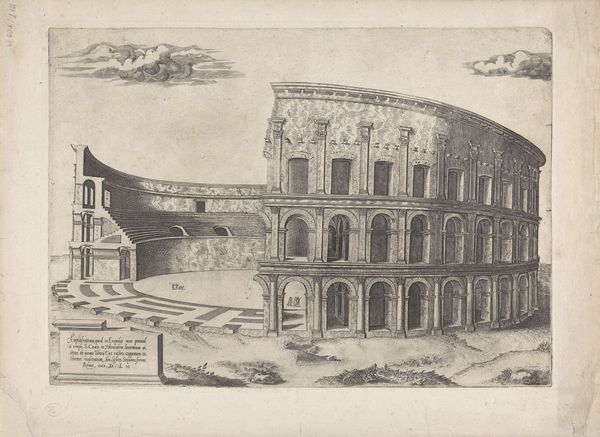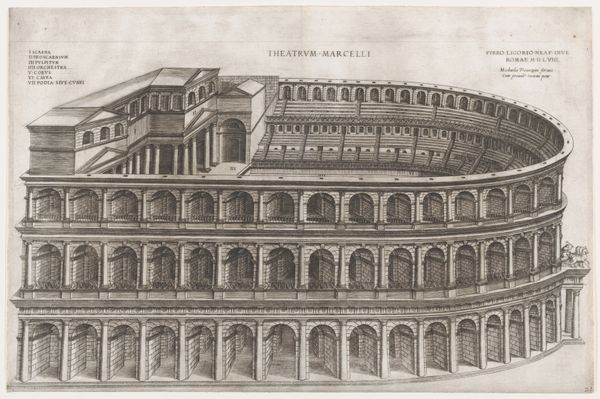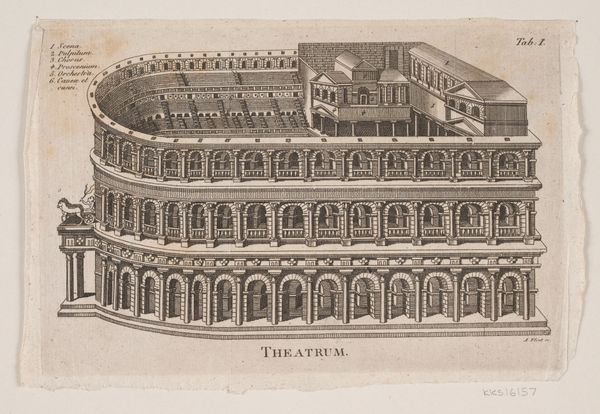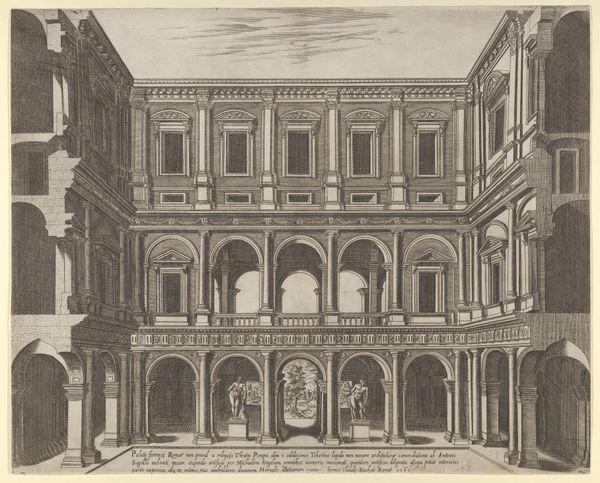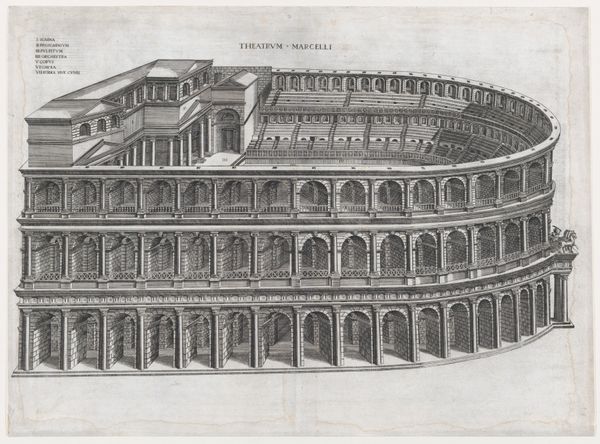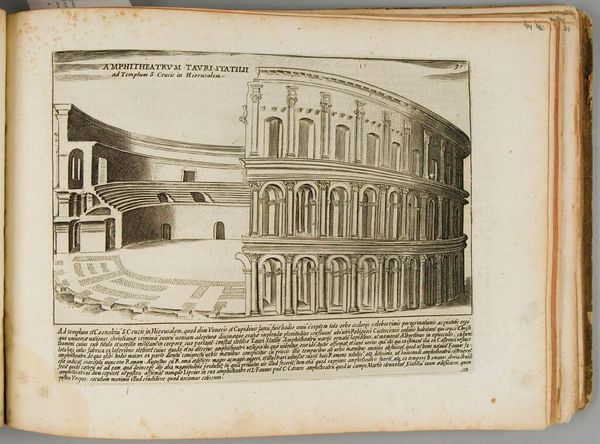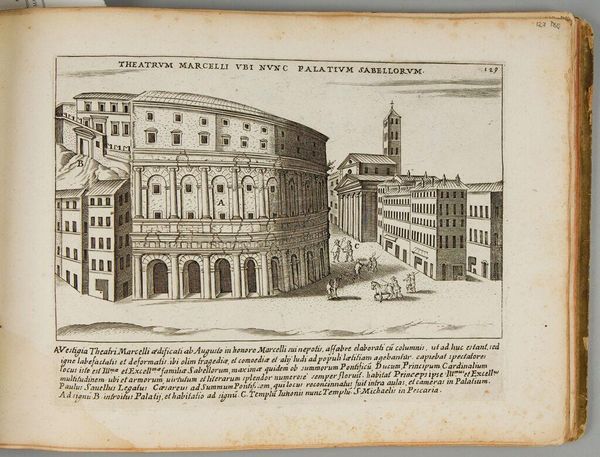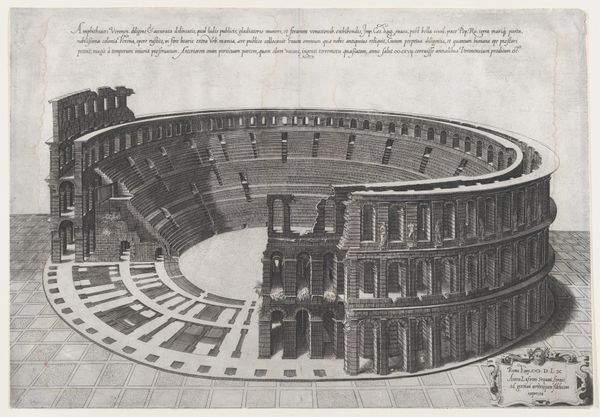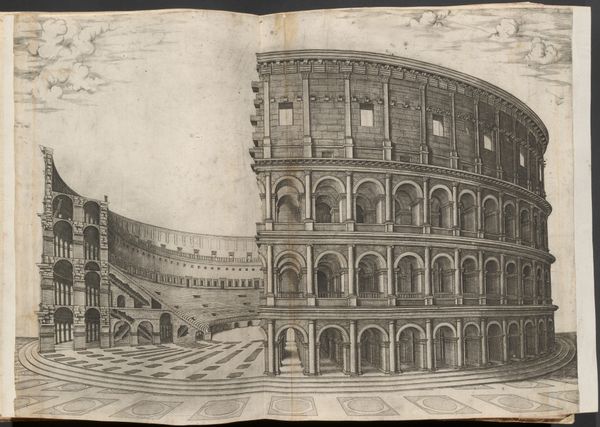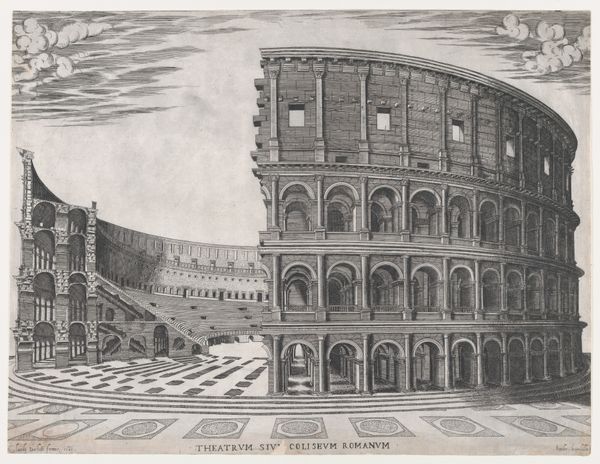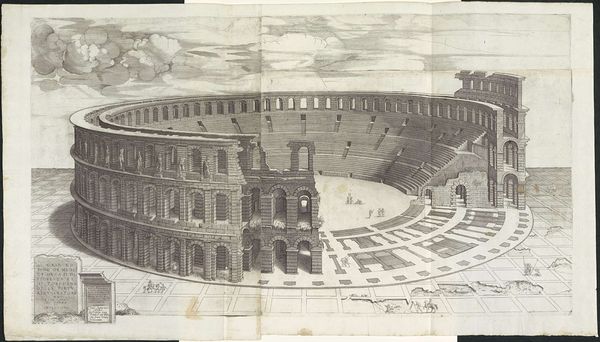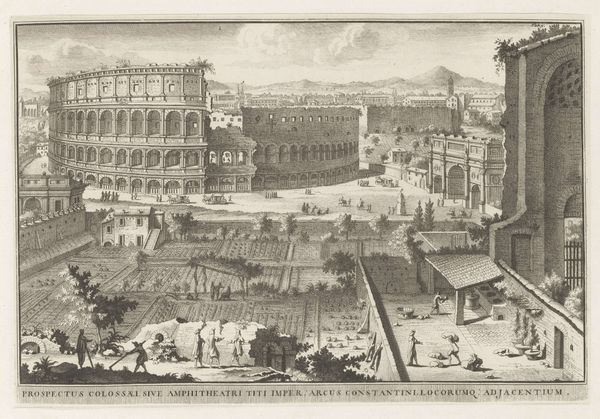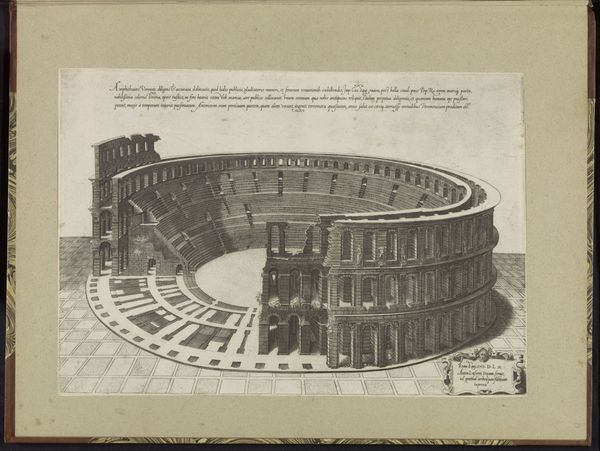
Speculum Romanae Magnificentiae: Amphiteathrum Castrense 1560
0:00
0:00
drawing, print, engraving, architecture
#
drawing
# print
#
11_renaissance
#
history-painting
#
engraving
#
architecture
Dimensions: sheet: 12 13/16 x 18 1/8 in. (32.6 x 46 cm) mount: 20 x 26 in. (50.8 x 66 cm)
Copyright: Public Domain
Curator: This print, titled Speculum Romanae Magnificentiae: Amphiteathrum Castrense, was created around 1560. The artist is anonymous, but the work is currently held at the Metropolitan Museum of Art. It's an engraving, a precise rendering of ancient architecture. Editor: There's such an air of decay and the romantic ruin in this image. It looks like the architectural drawing of a theatre, cutaway, yet haunting in its detail, the clouds are brooding in the background. Curator: Indeed, the ruin becomes a symbol here. Consider the socio-political context: Renaissance artists were fascinated by Roman antiquity, and such detailed architectural studies served as both documentation and, in a sense, as a reclaiming of a lost heritage. The work becomes enmeshed with ideals of civic virtue, linking back to the Renaissance artistic project, but the ruin of course represents the ephemerality of earthly things. Editor: And look at the meticulousness with which the amphitheater is rendered – each brick, each arch. There’s a palpable sense of pride in showcasing the ingenuity of Roman engineering. And of its capacity for violence. Amphitheatres are interesting spaces in terms of symbolism as much as physical reality. They become emblematic of power. Curator: Exactly! Amphitheatres as places of public gathering reflect structures of governance. Consider also the gaze directed within this image - that it both monumentalizes and critiques social order by reminding the viewer of human capacity for inflicting suffering and violence, even through something as outwardly ‘harmless’ as staged theatre. Editor: It speaks to cycles, doesn’t it? Of construction, of destruction, of rediscovery. The very act of engraving is itself interesting to the history of memory, that visual forms can be duplicated and disseminated so widely, echoing or rewriting history over and over. I suppose my point being, this is an architectural image, but not about that in a simple way. Curator: I appreciate how you brought in ideas of both social critique and human endeavor when responding to this. It reminds me of how the study of antiquity can both glorify and destabilize. Editor: Agreed. Images carry their past within them, and through each viewing they shape our perceptions. Curator: Beautifully said.
Comments
No comments
Be the first to comment and join the conversation on the ultimate creative platform.
